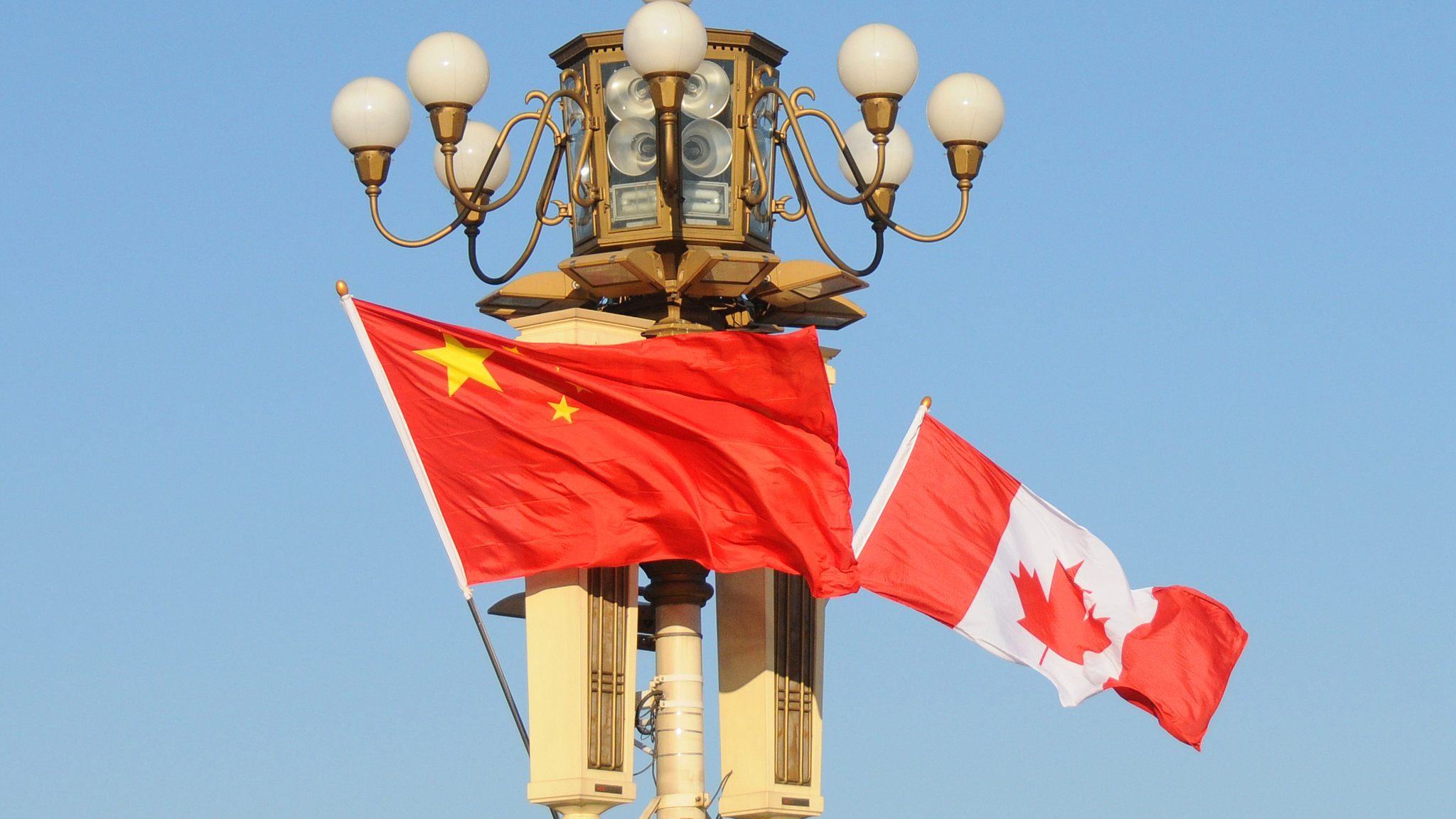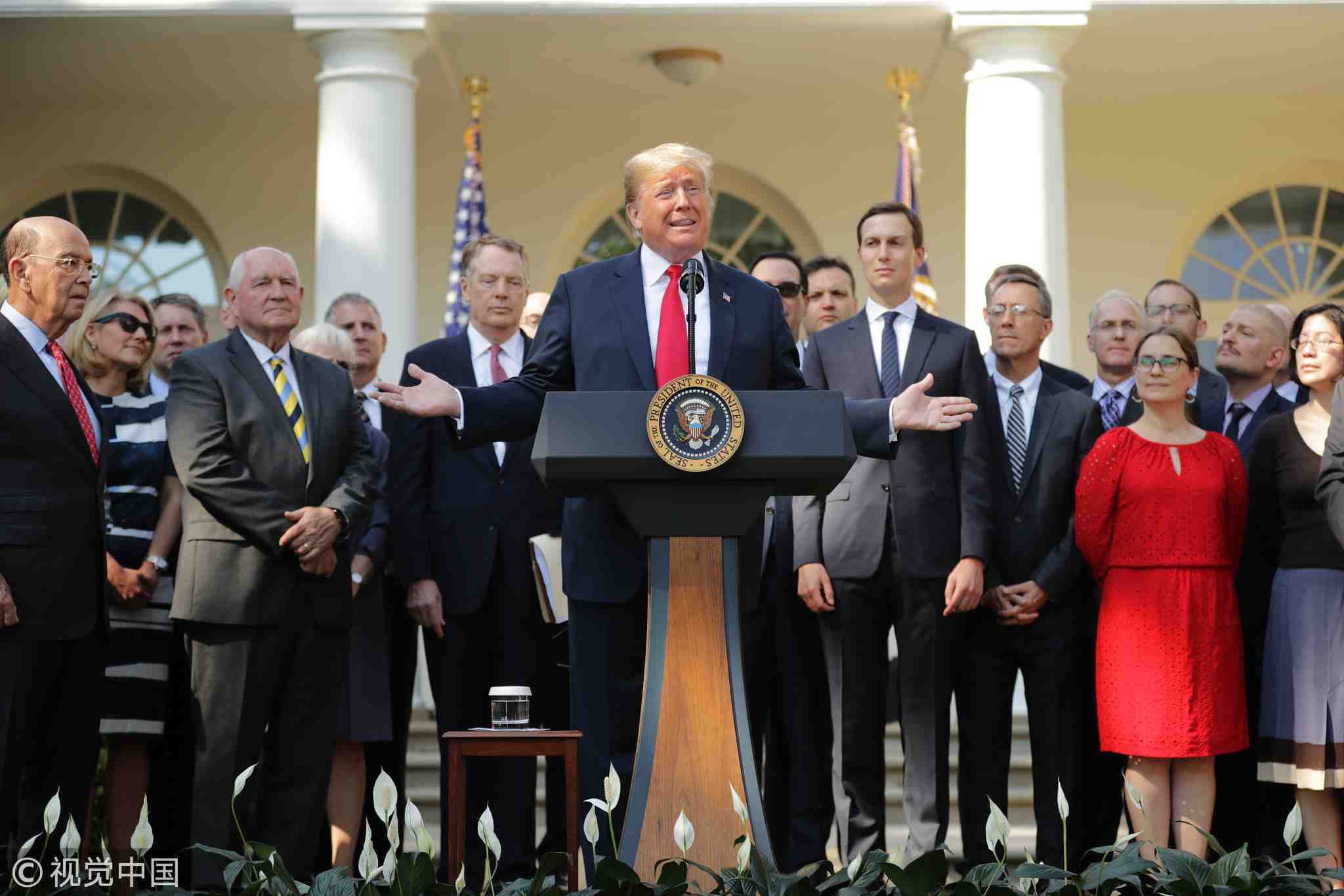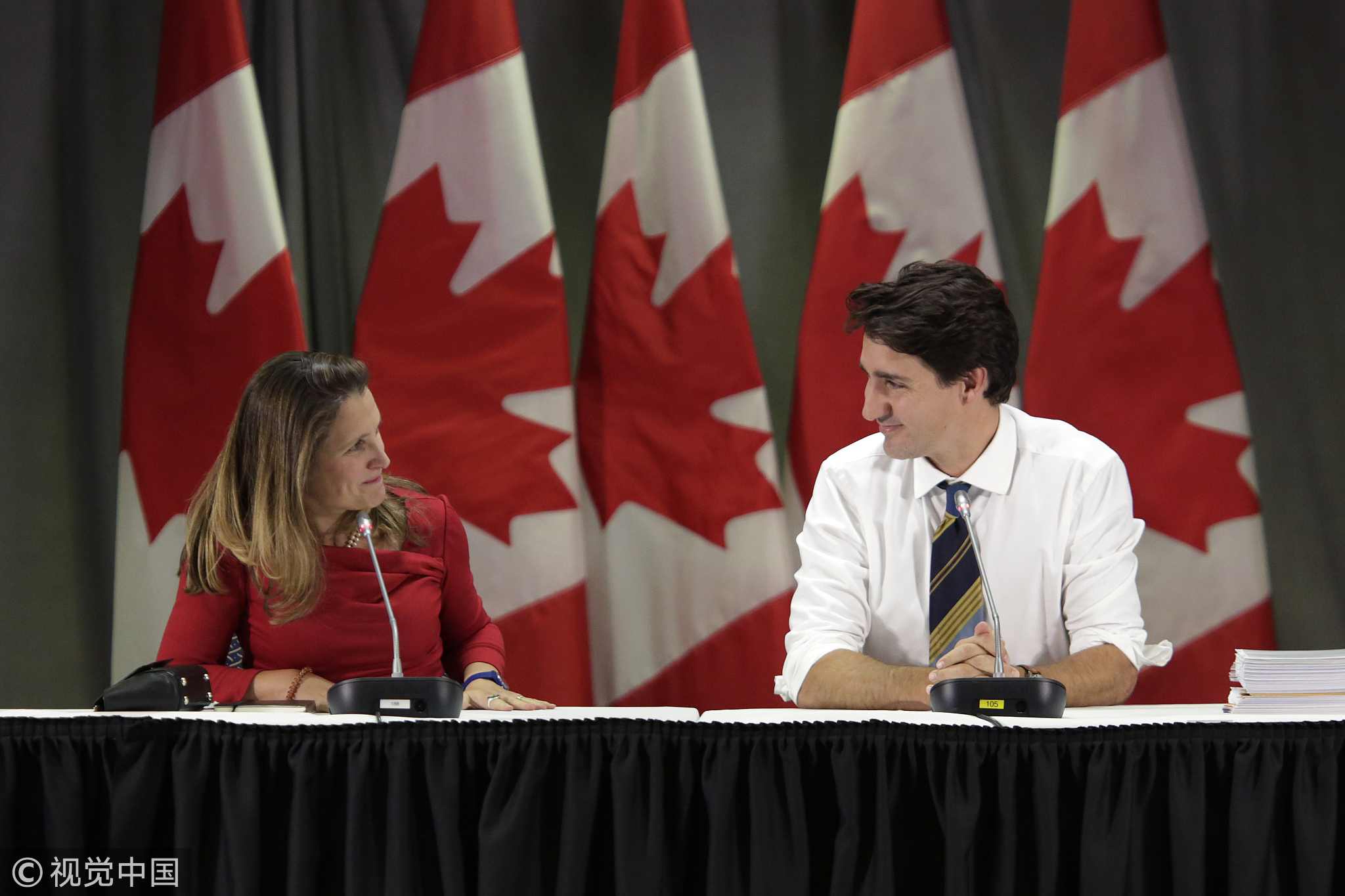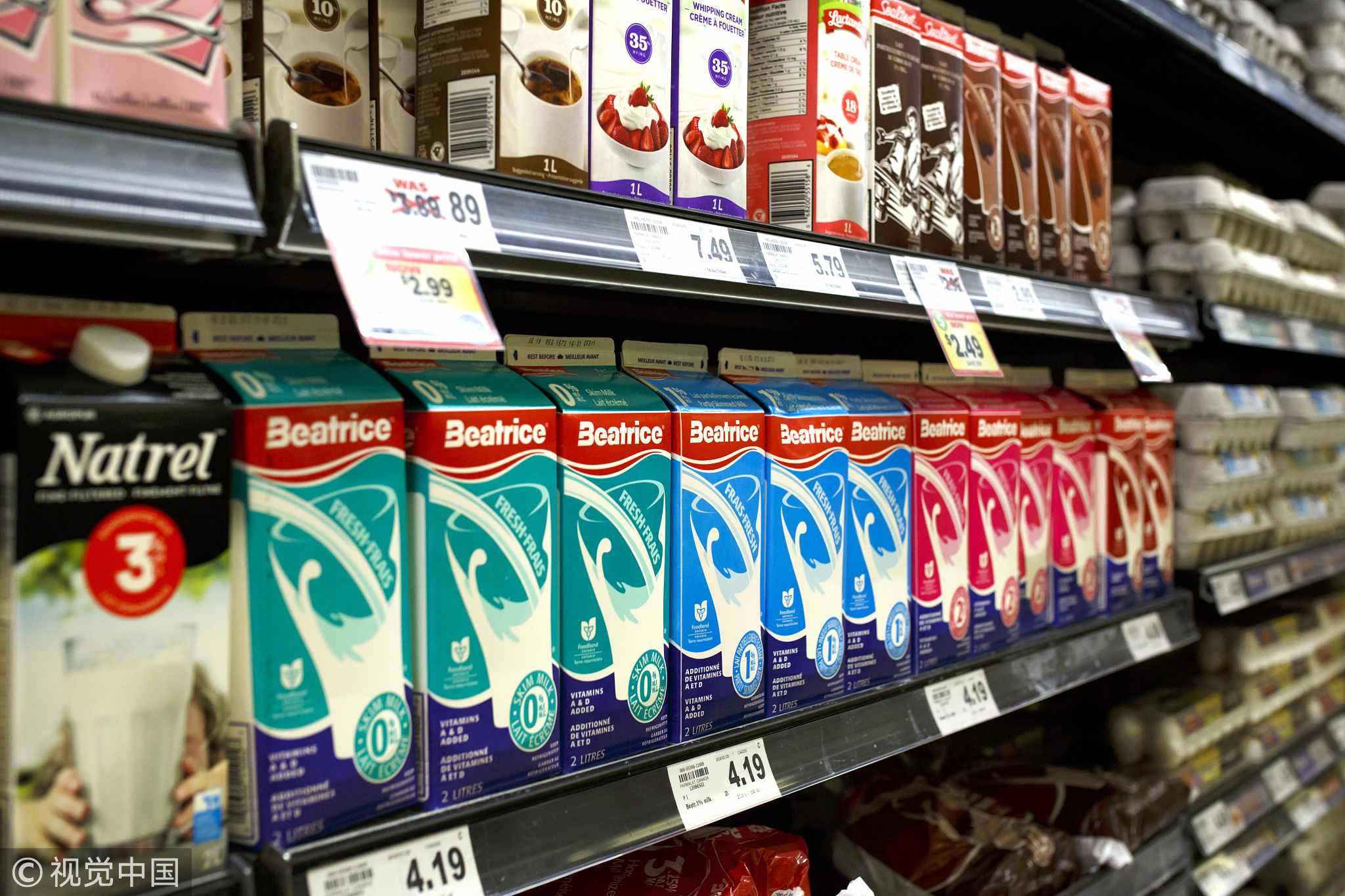
Opinions
11:12, 22-Oct-2018
Opinion: Economic rapprochement benefits Canada and China
Updated
10:08, 25-Oct-2018
Ken Moak

Editor's note: Ken Moak taught economic theory, public policy and globalization at the university level for 33 years. He co-authored a book titled "China's Economic Rise and Its Global Impact" in 2015. The article reflects the author's opinion, and not necessarily the views of CGTN.
It should be pointed out at the outset that Canada leapfrogging industrialization and development was largely due to British and American investment.
They brought capital and technology in exploiting Canada's huge endowment of resources, from fisheries, timber, mining, and agriculture, establishing what the late historian Harold Innes called the “Staple Theory”, industrialization through resource production. That is, new industries – manufacturing and service industries – were created to harvest, transport, process, and export seafood to outside markets.
Over time, British economic and financial power receded as those of the US acceded. Being neighbors and “sons/daughters of a common mother,” it was natural for the two countries to forge a close relationship. However, having 10 percent of its southern neighbor's economy and population, Canada did not have the capital, technology, and market size to develop or support a “sustainable” economy, heavily relying on American investment and international trade.
Effects of overdependence on the US
International trade accounts for almost 40 percent of Canada's GDP, over 75 percent of which is with America. However, putting most of “its eggs in one basket” has exposed Canada's vulnerability to US economic woes and policies. An economic slowdown in the US would reduce Canadian exports to the southern neighbor.

US President Donald Trump speaks during a press conference to discuss a revised US trade agreement with Mexico and Canada in the Rose Garden of the White House in Washington, DC, US on October 1, 2018. /VCG Photo.
US President Donald Trump speaks during a press conference to discuss a revised US trade agreement with Mexico and Canada in the Rose Garden of the White House in Washington, DC, US on October 1, 2018. /VCG Photo.
The US-China trade war, too, has implicated Canada. The recently reached US-Mexico-Canada Agreement (USMCA), requiring Canada to inform the US if it intends to negotiate a trade agreement with a “non-market economy” in advance is meant to prevent it from engaging China.
The US wields a “big stick” over Canada. Most Canadian exports are made by US subsidiaries in these countries. For example, automobiles are produced by US firms – Ford, GMC – in Canada and exported to America. If the US opposes a Canada-China free trade agreement, it could pressure the parent companies to “rein” in the subsidiaries.
The US government did just that, pressuring American parent companies to prevent Canadian subsidiaries from selling goods to Cuba. The US could also threaten heavy tariffs on “Canadian” automobiles and parts as Trump had if he did not get the agreement he wants.
Overdependence on the US market has also “truncated” the Canadian economy, denying it from attaining a comprehensive industrial policy. For example, research and development activities are taking place mostly if not solely in the US, selling it to the Canadian subsidiaries at high prices. What's more, Canada remains a “drawer of water and hewer of wood”, producing resource – oil, forestry, mining – to fuel the US economy. Most of these resource industries are owned by and for US businesses or markets.
Canada should wean away from US dependence
It is in Canada's interests to diversify its trade relationship with a host of other nations, particularly with its second largest trade partner. After India, China is the fastest growing major economy, estimated at 6.7 percent in the first three quarters of this year, according to the National Bureau of Statistics.
Though not meeting the third quarter target of 6.6 percent, the 6.5 percent growth rate is still two to three times that of the West and Japan. Growing at around two percent or less per year, it is difficult to see how they could buy large quantities of Canadian products.

Justin Trudeau, Canada's prime minister, right, and Chrystia Freeland, Canada's minister of foreign affairs, smile during the Global Affairs Canada Trade and Negotiations Branch meeting at the John G. Diefenbaker building in Ottawa, Ontario, Canada, on Oct. 17, 2018. /VCG Photo.
Justin Trudeau, Canada's prime minister, right, and Chrystia Freeland, Canada's minister of foreign affairs, smile during the Global Affairs Canada Trade and Negotiations Branch meeting at the John G. Diefenbaker building in Ottawa, Ontario, Canada, on Oct. 17, 2018. /VCG Photo.
India has the potential to be a major trade partner, given its relatively high growth rate of over seven percent annually over the past year or so. But its GDP is relatively small, estimated at around 2.8 trillion US dollars by the IMF in 2018.
Further, the Indian economy is showing signs of protectionism, raising tariffs and engaging in “competitive devaluation” to protect domestic industries and prevent capital outflow. Besides, Canada-India two-way trade is less than four billion Canadian dollars in 2018, 10 percent that Canada-China's over 46 billion Canadian dollars according to Industry Canada.
Timely to reverse trade relationship with China
Canada's two-way trade with China is down from over 85 billion Canadian dollars (about 65 billion US dollars) in 2015 to just little over 46 billion Canadian dollars (about 35 billion US dollars) in 2018, according to Industry Canada; erosion began in 2006 when Stephen Harper's center-right government replaced the Liberal's centrist one.
Harper listened to his uninformed or biased advisers, treating China as “adversary” in the first few years in office, squandering the geo-economic relationship that former prime ministers Pierre Eliot Trudeau, Jean Chretien and Paul Martin took decades to build.

Canadian milk and milk products are seen in a grocery store in Caledon, Canada on September 4, 2018. /VCG Photo.
Canadian milk and milk products are seen in a grocery store in Caledon, Canada on September 4, 2018. /VCG Photo.
Vowing not to sell “Canadian values for the almighty dollar” culminated in an average annual growth rate of around two percent while that of China was galloping at over nine percent before the 2008 financial crisis. Indeed, China, with its huge stimulus package of over 580 billion US dollars played an important role in preventing Canada from falling into a recession by buying the amounts of resources in 2009.
'Time is ripe' for negotiating a Canada-China trade agreement
Thanks to Donald Trump and a more “open-minded” public, the “time is ripe” for a Canada-China economic rapprochement. According to a 2017 Globe and Mail Poll, almost half of Canadians (48 percent and growing) viewed China positively while 40 percent had negative feelings. In the same poll, over 60 percent of Canadians felt a Canada-China free trade agreement would benefit Canada.
Accessing the huge and lucrative Chinese market and investment funds are crucial in enhancing and sustaining Canada's long-term economic growth and stability. But that requires strong political leadership and will of the elder Trudeau, Chretien and Martin tradition.
Pierre E. Trudeau was aware of China's potential and established diplomatic relations with China in 1970. Jean Chretien recognized the importance of China to Canada's economy, taking frequent trips to promote a relationship with the Asian giant. Paul Martin followed the footsteps of his predecessors.
The question is: Does Justin Trudeau have the “right stuff” to deliver a Canada-China trade agreement? Canada and China certainly hope so because both nations will benefit.
(If you want to contribute and have specific expertise, please contact us at opinions@cgtn.com.)

SITEMAP
Copyright © 2018 CGTN. Beijing ICP prepared NO.16065310-3
Copyright © 2018 CGTN. Beijing ICP prepared NO.16065310-3